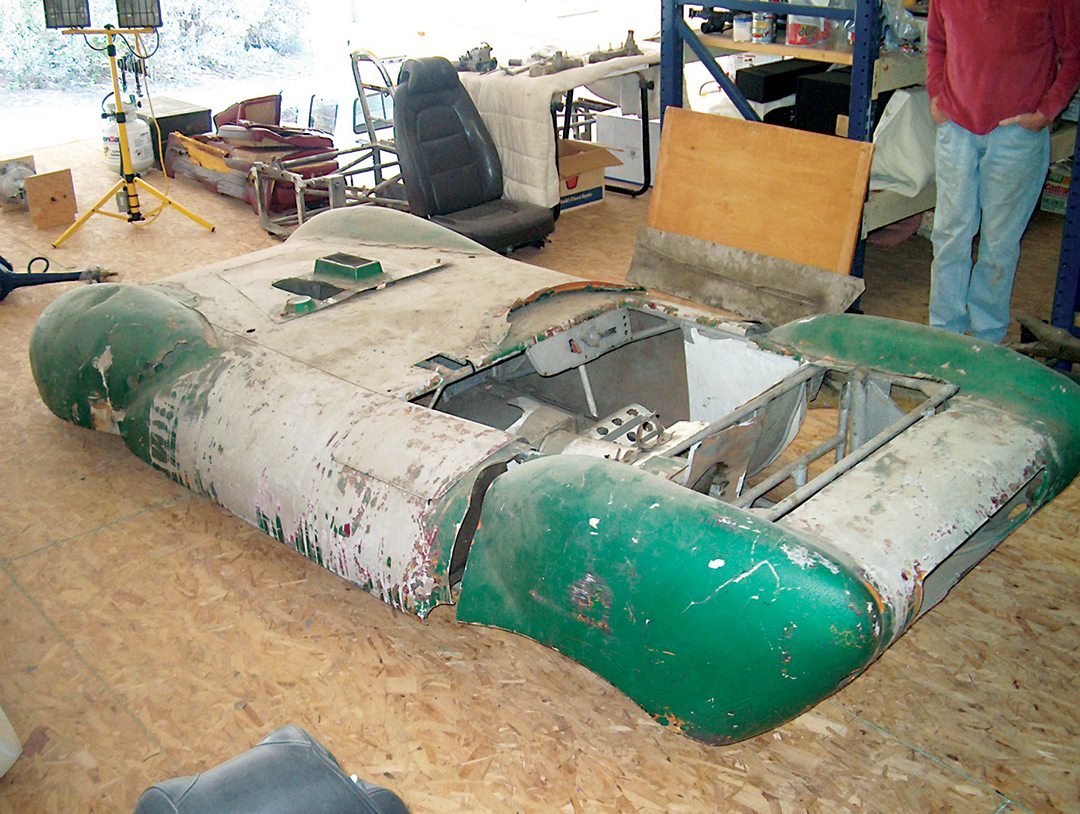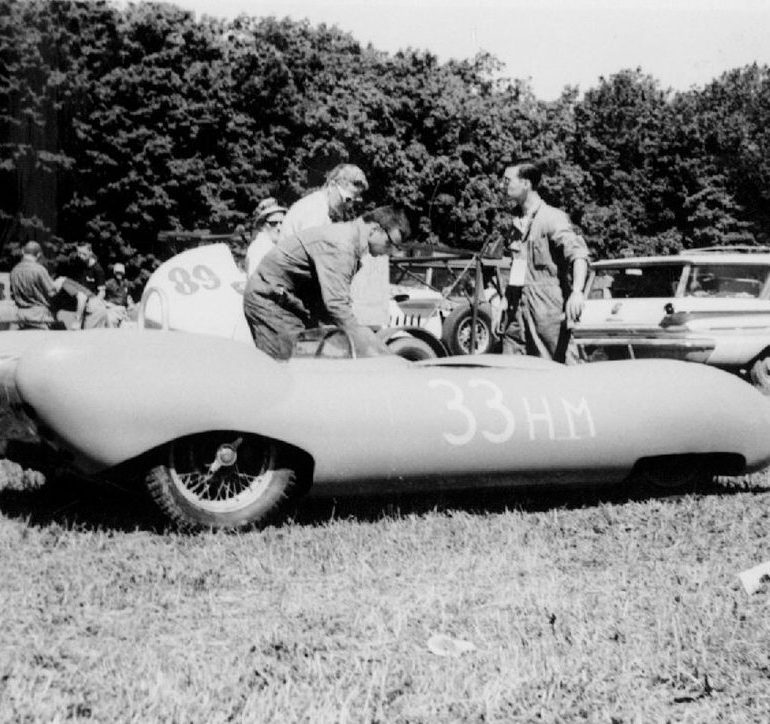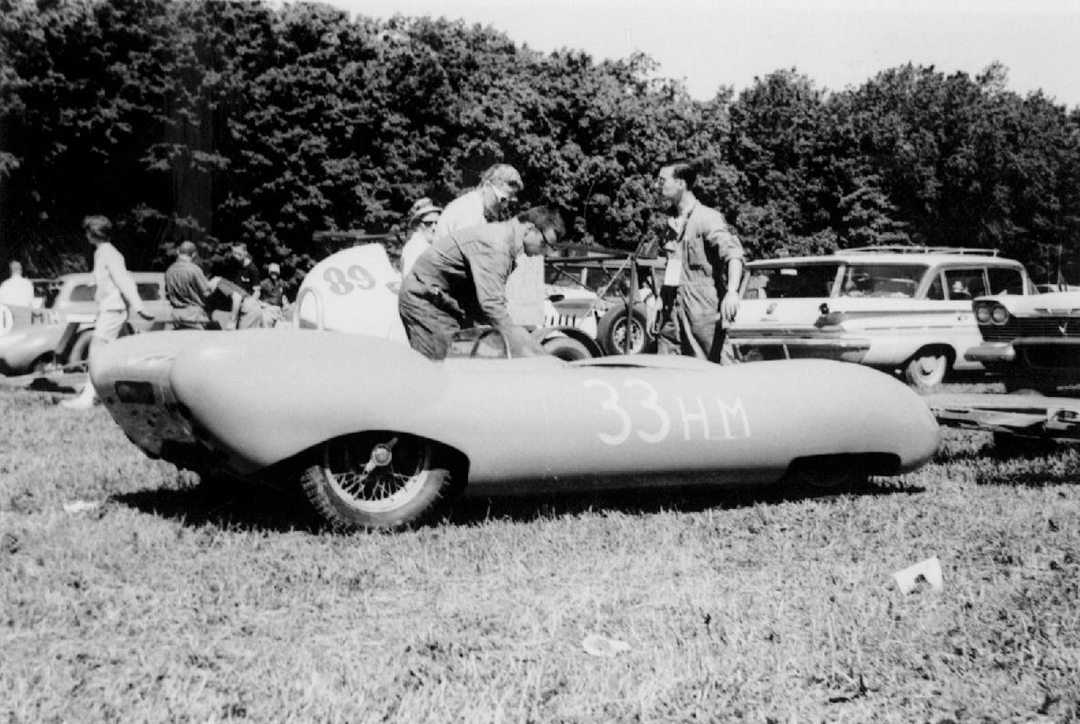There’s always been something magical about the H-Modified cars of the ’50s and early ’60s. These 750-cc (and later 850-cc) weapons were driven with zing and enthusiasm, not grunt and anger. And the very best drove ’em foot to the floor all the way around, not hard on brakes, hard on the gas like the big bore guys. Make no mistake, winning counted. But the H-class was never just about green and checkered flags. And no one has said it better than the late H-Modified guru, Joe Puckett: “One thing that sets the H Modified apart from the other classes in sports car racing is the fellowship among the competitors. Sure, they’re each trying to blow the doors off one another but, when it is twilight time and one of the guys has to pull his engine or his transmission in the pits, the other guys are around to help with advice and extra hands, flashlights and beer. No other group that I have seen has the closeness of H-Modified. This camaraderie is as strong in vintage racing as it was the first time around.”
Okay, so the engines were diminutive. But if you can get past that, the cars were amazingly cool. The list of European H–Mod manufacturers is almost too numerous to count and includes Abarth, Bandini, Deutsch-Bonnet, Giaur, Moretti, Nardi, OSCA, Stanguellini, Volpini, and many, many others. What is particularly intriguing is that a number of these European purebreds were powered at their respective factories by Crosley-based powerplants from the good old USA.
And speaking of American iron, let’s not forget the wonderful little cars that came from U.S. manufacturers like James Broadwell (Jabro), Bill Devin (Devin), and Don Miller (Miller). And let’s also recall the homespun efforts from garages coast to coast. Cars like the Kangaroo-Fiat, Fairchild Panhard, PBX Crosley, Papier Mache Special, Odenborg (Outboard) Mercury, Flying Triangle, and many, many more. Among this last group, a series of cars and one man stand in distinction. I am, of course, referring to Martin Tanner and his seven fabulous H-Modified Specials.
Martin Tanner of Saginaw, Michigan, was many things to many people. He was an athlete, painter, bridge champion, entrepreneur, boat builder, sculptor, as well as a racecar designer, builder, and driver. Tanner built his first car, the Tanner T-1 (also known as the Martin-T), in 1956/1957. An automotive anorexic, Tanner was nearly pathologic in his quest to lighten everything. The tubular space frame was built from aluminum and was cross-drilled within an ounce of its life. All formed surfaces were from lightweight aluminum, and the firewall and floorboards were from magnesium. It worked. Fully clothed in a lovely alloy skin of Tanner’s design, the car weighed in at 720 pounds…that’s 264 pounds lighter than Doc Bill Mollé’s championship-winning 750-cc Fairchild Panhard!
The T-1 was initially powered by a 750-cc Crosley CIBA unit, but Tanner thought he could go faster with Saab power. It turns out he was right. In this configuration, Tanner captured the 1958 SCCA National H-Modified Championship. Not bad for a first effort.
Tanner’s next car was the T-2, built in 1959. Starting with another one-off aluminum space frame, he built the car up with Fiat Topolino suspension at both ends. The T-2 body was constructed of aluminum (with fiberglass fender blisters) but did not carry forward the design elements of the T-1. Most Tanner experts agree that the T-2 body was fashioned after the Lotus XI which was ripping up racecourses around the globe. Like the T-1, the T-2 was a runner and was motivated by the versatile Saab 3-cylinder powerplant.
While little is known about the T-2’s period competition history, the little jewel box was raced in the Midwest by Tanner and later sold to Frank Isaacson of Glenview, Illinois. From here, the fate of the car remained virtually unknown until 1989 when Tanner enthusiast (and owner of the T-5 since 1985), Gene Leasure, ran into H–Mod-legend Sandy MacArthur at a vintage event at Firebird Raceway in Phoenix. According to Leasure, “MacArthur walked up and looked at the T-5. He had been friends with Tanner and liked what I had done with the car. He told me the T-2 was in existence and said ‘you should have that car.’” MacArthur put Leasure in touch with Lyne Isaacson who still owned her late-husband’s T-2. The car was actually being stored for her at MacArthur’s race shop in the Chicago area. After several discussions with Lyne, Leasure made a deal and bought the car as a chassis and body with an engine, steering wheel, shaft, and column in 1991. The car was without gearbox, suspension, and rear end.
Leasure has been gathering up components over the years and hopes to return the marvelous T-2 to the asphalt one day. He continues to look for racing history on the car and can be contacted at [email protected]






